Hilbert's paradox of the Grand Hotel is a thought experiment which illustrates a counterintuitive property of infinite sets. It is demonstrated that a fully occupied hotel with infinitely many rooms may still accommodate additional guests, even infinitely many of them, and this process may be repeated infinitely often. The idea was introduced by David Hilbert in a 1924 lecture "Über das Unendliche", reprinted in, and was popularized through George Gamow's 1947 book One Two Three... Infinity.
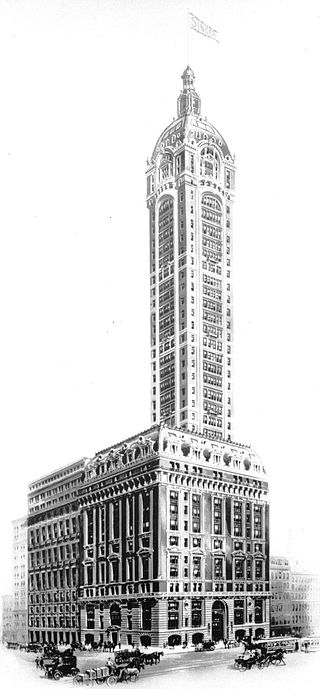
The Singer Building was an office building and early skyscraper in Manhattan, New York City. The headquarters of the Singer Manufacturing Company, was at the northwestern corner of Liberty Street and Broadway in the Financial District of Lower Manhattan. Frederick Gilbert Bourne, leader of the Singer Company, commissioned the building, which architect Ernest Flagg designed in multiple phases from 1897 to 1908. The building's architecture contained elements of the Beaux-Arts and French Second Empire styles.

The thirteenth floor is a designation of a level of a multi-level building that is often omitted in countries where the number 13 is considered unlucky. Omitting the 13th floor may take a variety of forms; the most common include denoting what would otherwise be considered the thirteenth floor as level 14, giving the thirteenth floor an alternate designation such as "12A" or "M", or closing the 13th floor to public occupancy or access.

Elevator Action is a platform shooter game released in arcades by Taito in 1983. The player assumes the role of Agent 17, a spy infiltrating a 30-story building filled with elevators and enemy agents who emerge from closed doors. The goal is to collect secret documents from specially marked rooms, then escape the building. It runs on the Taito SJ System arcade system.

A double-deck elevator or double-deck lift is an elevator where one cab is stacked on top of another. This allows passengers on two consecutive floors to be able to use the elevator simultaneously, significantly increasing the passenger capacity of an elevator shaft. Such a scheme can improve efficiency in buildings where the volume of traffic would normally have a single-deck elevator stopping at every floor. For example, a passenger may board the lower deck at basement level while another passenger may board the upper deck on the ground floor—the cab serving even floors is on top of the cab serving odd floors.

A Shabbat elevator is an elevator which works in a special mode, operating automatically, to satisfy the Jewish law requiring Jews to abstain from operating electrical switches on Shabbat. These are also known as Sabbath or Shabbos elevators.

The secretary problem demonstrates a scenario involving optimal stopping theory that is studied extensively in the fields of applied probability, statistics, and decision theory. It is also known as the marriage problem, the sultan's dowry problem, the fussy suitor problem, the googol game, and the best choice problem. Its solution is also known as the 37% rule.

The two envelopes problem, also known as the exchange paradox, is a paradox in probability theory. It is of special interest in decision theory and for the Bayesian interpretation of probability theory. It is a variant of an older problem known as the necktie paradox. The problem is typically introduced by formulating a hypothetical challenge like the following example:
Imagine you are given two identical envelopes, each containing money. One contains twice as much as the other. You may pick one envelope and keep the money it contains. Having chosen an envelope at will, but before inspecting it, you are given the chance to switch envelopes. Should you switch?
A delayed-choice quantum eraser experiment, first performed by Yoon-Ho Kim, R. Yu, S. P. Kulik, Y. H. Shih and Marlan O. Scully, and reported in early 1998, is an elaboration on the quantum eraser experiment that incorporates concepts considered in John Archibald Wheeler's delayed-choice experiment. The experiment was designed to investigate peculiar consequences of the well-known double-slit experiment in quantum mechanics, as well as the consequences of quantum entanglement.
Shake, Rattle and Roll 8 is a 2006 Filipino horror anthology film directed by Rahyan Q. Carlos, Topel Lee, and Michael Tuviera, and the eighth installment of the Shake, Rattle & Roll film series. It is produced by Regal Entertainment, and was an entry to the 2006 Metro Manila Film Festival.
9/11: The Twin Towers is a movie based on the 9/11 attacks which uses re-enactments and computer-generated imagery to re-create a minute-by-minute account of what happened inside the Twin Towers of the World Trade Center in New York City during the September 11 attacks. In the United States it premiered on the Discovery Channel on 3 September 2006, narrated by Harry Pritchett. In the United Kingdom it premiered on BBC One on 7 September 2006, narrated by Terence Stamp.
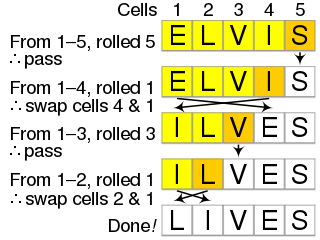
The Fisher–Yates shuffle is an algorithm for shuffling a finite sequence. The algorithm takes a list of all the elements of the sequence, and continually determines the next element in the shuffled sequence by randomly drawing an element from the list until no elements remain. The algorithm produces an unbiased permutation: every permutation is equally likely. The modern version of the algorithm takes time proportional to the number of items being shuffled and shuffles them in place.

The Equitable Life Assurance Building, also known as the Equitable Life Building, was the headquarters of the Equitable Life Assurance Society of the United States, at 120 Broadway in Manhattan, New York. Arthur Gilman and Edward H. Kendall designed the building, with George B. Post as a consulting engineer. The Equitable Life Building was made of brick, granite, and iron, and was originally built with seven above-ground stories and two basement levels, with a height of at least 130 feet (40 m). An expansion in 1885 brought the total height to 155 feet (47 m) and nine stories.
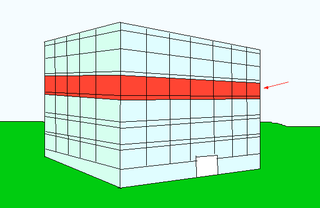
A storey or story is any level part of a building with a floor that could be used by people. Plurals for the word are storeys (UK) and stories (US).
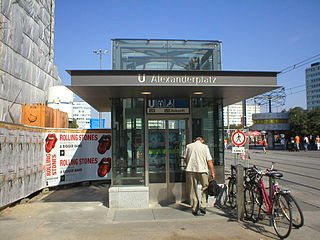
An elevator (North American English) or lift (British English) is a machine that vertically transports people or freight between levels. They are typically powered by electric motors that drive traction cables and counterweight systems such as a hoist, although some pump hydraulic fluid to raise a cylindrical piston like a jack.
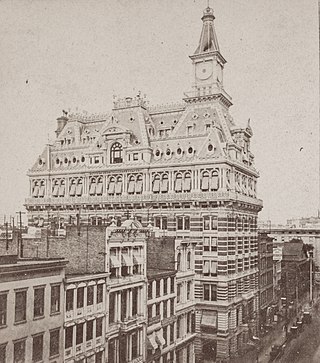
The Western Union Telegraph Building was a building at Dey Street and Broadway in the Financial District of Manhattan in New York City. The Western Union Building was built with ten above-ground stories rising 230 feet (70 m). The structure was originally designed by George B. Post, with alterations by Henry Janeway Hardenbergh. It is considered one of the first skyscrapers in New York City.
The Garden of Sinners: Paradox Spiral is a 2008 Japanese animated film produced by ufotable based on The Garden of Sinners novels by Kinoko Nasu. It is the fifth installment in the series, preceded by The Hollow Shrine (2008) and followed by Oblivion Recording (2008). Chronologically, the events that occur in The Garden of Sinners: Paradox Spiral are the sixth in the timeline of the series.
Nation Estate is a 2013 Palestinian movie directed by Larissa Sansour. It is a sci-fi short film that depicts Palestine as a skyscraper, with each floor representing a city in Palestine. An earlier version of the project garnered attention when it was removed from a competition at the Musée de l'Elysée, allegedly due to its political connotations.

The Quake is a 2018 Norwegian disaster film directed by John Andreas Andersen. It is the sequel to The Wave and was released in Norwegian theaters on 31 August 2018.













